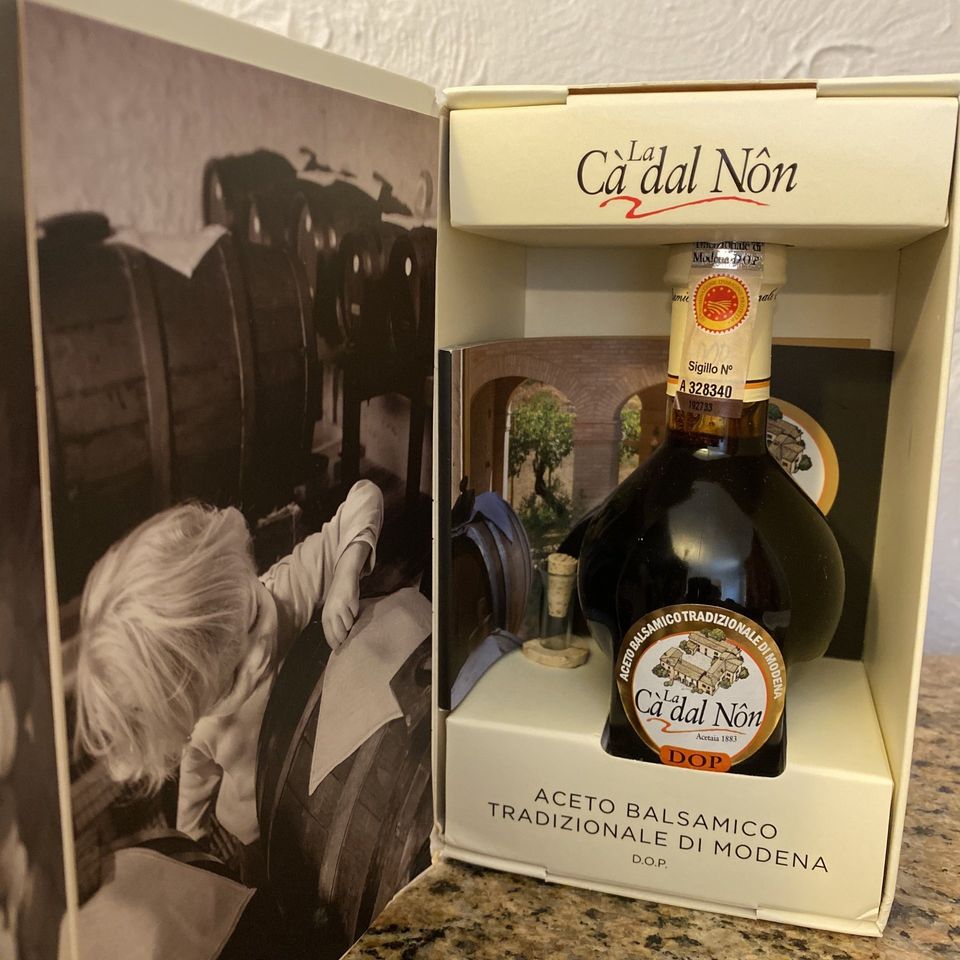Why Traditional Balsamic Vinegar is Unique
Carl Silvestri • November 11, 2019
An Ancient Product
Traditional balsamic vineger from Modena
is not meant for salad dressing. It is not produced from wine, as most vinegars, but from cooked grape juice (cooked must), aged by a long and slow acetification process, through natural fermentation.
Its progressive concentration is reached by aging in a series of barrels made of different types of woods and without any addition of spices or flavourings.
Traditional Balsamic Vinegar of Modena is one of the most ancient products of the Modena region and for sure unique in the world. And the bottle shape is also unique, a tell tale sign you are getting the authentic, certified version.
Origins go back in Roman times, as the Romans in Modena used to cook the grape juice to make sort of molasses which they called Saba, used to sweeten food, as well as they used honey.
The Romans had already discovered that under certain conditions Saba started a natural fermentation and acidification process. In the following centuries a technique to produce a very special vinegar was developed... the story of this dark gold was beginning.
Traditional balsamic vinegar is used and has always been used to make gifts to important people. In the past, it were the foreign imperial delegations passing through the Dukedom of Modena on their way to Rome, today it’s kings, princes, presidents, notables, food lovers and people you want to honour.
PRODUCTION
Traditional Balsamic vinegar production is a most fascinating example of a never ending art process.
Years after years the production cycle follows the rhythm of the seasons: the harvest is followed by the pressing of the grape (trebbiano modenese, lambrusco, pignoletto and other typical modenese grapes harvested in Modena in vineyards enrolled for the certification for traditional balsamic vinegar) and the cooking of the must. The cooked must is firstly placed in barriques, then aged in a series of decreasing volume barrels,made of different kinds of wood - the so called “batteria”.
Summer heat helps the concentration of sugar tenor, acidity and flavours, spring and autumn mild temperatures enable microbiological activities: fermentation and acetification.
Winter frost gives clearness to the product.
Every winter the traditional operations of “travaso” and “rincalzo” are performed: the smallest cask of the series is refilled with part of the vinegar of the previous one and so on, till the biggest barrel of the batteria, where the new cooked must is poured.
This continuous blending over years and years, gives aging to the vinegar and shapes its unique flavor and texture.
Only after 12 years of “travaso” and “rincalzo”, the minimum aging abiding by the protected origin designation, they can start taking out a small quantity of ready vinegar from the smallest cask of the series.
